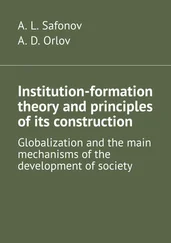
Stefanie Strebel
Between Dream Houses and “God’s Own Junkyard”: Architecture and the Built Environment in American Suburban Fiction
[bad img format]
Umschlaggestaltung: Martin Heusser, Zürich
Umschlagabbildung: Konstantin L / Shutterstock.com
Die vorliegende Arbeit wurde von der Philosophischen Fakultät der Universität Zürich im Frühjahrssemester 2018 auf Antrag der Promotionskommission von Prof. Dr. Martin Heusser (hauptverantwortliche Betreuungsperson) und Prof. Dr. Ana Sobral als Dissertation angenommen.
Stefanie Strebel, ORCID: Nummer 0000-0002-3336-4199
Faculty of Arts and Social Sciences, Universität Zürich, Zürich, Schweiz
DOI: https://doi.org/10.24053/9783772057519
Die Druckvorstufe dieser Publikation wurde vom Schweizerischen Nationalfonds zur Förderung der wissenschaftlichen Forschung unterstützt.
© 2021 · Stefanie Strebel
Das Werk ist eine Open Access-Publikation. Es wird unter der Creative Commons Namensnennung – Weitergabe unter gleichen Bedingungen | CC BY-SA 4.0 ( https://creativecommons.org/licenses/by-sa/4.0/) veröffentlicht, welche die Nutzung, Vervielfältigung, Bearbeitung, Verbreitung und Wiedergabe in jeglichem Medium und Format erlaubt, solange Sie die/den ursprünglichen Autor/innen und die Quelle ordentlich nennen, einen Link zur Creative Commons-Lizenz anfügen und angeben, ob Änderungen vorgenommen wurden. Die in diesem Werk enthaltenen Bilder und sonstiges Drittmaterial unterliegen ebenfalls der genannten Creative Commons Lizenz, sofern sich aus der am Material vermerkten Legende nichts anderes ergibt. In diesen Fällen ist für die oben genannten Weiterverwendungen des Materials die Einwilligung des jeweiligen Rechteinhabers einzuholen.
Narr Francke Attempto Verlag GmbH + Co. KG
Dischingerweg 5 • D-72070 Tübingen
Internet: www.narr.deeMail: info@narr.de
ISSN 0080-7214
ISBN 978-3-7720-8751-6 (Print)
ISBN 978-3-7720-0146-8 (ePub)
The purpose of construction
is to make things hold together;
of architecture to move us.
– Le Corbusier
The Rise and Fall of Suburbia: History, Popular Culture and Architecture
Nowhere in the world does the suburb, or the sphere of suburbia, have a greater impact on national culture than in the United States. Having first been predominantly exclusive to the wealthier segment of society in the late nineteenth and early twentieth century – when they were “a sort of green ghetto dedicated to the élite” (Mumford, City in History 561) –, American suburbs became a phenomenon of mass production and artificial planning after World War II, and are now the home of more than fifty per cent of the country’s population. Once conjured up as a utopian ideal of a community by both urban planners and advertisers, the suburbs have come into remarkable disrepute since the second half of the twentieth century. They have developed from an imagined Arcadia-like utopia into a dystopia for many of their disillusioned residents, and they are accused of standing for everything that is wrong with modern society – be it in terms of materialism, consumerism or individualism. They turned out to be a dead end for many who were born and raised in them, and the voices of cultural critics, architects and urban planners turning against this environment have always been loud. The urban periphery is considered mundane, ordinary, repetitive, uniform and characterless. It is torn between city and countryside, between progressiveness and conservatism, and it remains a grey area, a space in-between, on both the geographical and the mental map.
Owing to the fact that the suburbs are a grey area and thus difficult to define, they are a border as well as a gateway zone, and they can occupy any spot on the spectrum between utopian ideal and dystopian nightmare at any time. As the character of Evan reads an old entry of his mother’s diary in the 1984 film Suburbia , what comes to the surface are the misguided utopian expectations the previous generation had when first moving to the outskirts: “They call it suburbia, and that word’s perfect because it’s a combination of the words suburb and utopia.” In order to stress the dystopian notion about these man-made landscapes, however, Evan’s friend points out that people back then failed to see that the suburbs would eventually become “the slums of the future” (Spheeris, Suburbia ). In a similar vein, Ian MacBurnie, late professor of architecture, describes the sphere framing the city limits fittingly as a middle landscape:
The periphery, variously conceived as edge city, middle landscape, perimeter centre, or technoburb but consistently perceived by the majority of Americans as suburbia, presents a demonstrably ironic environment – one that promotes diversity at the retail-office-industrial level, where transformation is endemic, yet that enforces homogeneity at the residential precinct level, where continuity is paramount, and the myth of timelessness sacrosanct; one that embraces technology yet values artifact; one that is premised on democracy but perpetuates itself by manufacturing consensus; an incongruous, multilayered milieu that means what it reveals but does not readily reveal what it means; a concept whose implication is as yet little understood and whose opportunity is as yet ill considered. (MacBurnie 136)
Despite this quasi-schizophrenic nature of the urban periphery, the suburbs are regarded as convenient, comfortable, peaceful and safe. In the United States in particular, they have come to represent the preferred way of living of the average middle-class citizen since the immediate postwar years. Suburbia is an architectural manifestation of normality, conformity and mediocrity, with all these characteristics being a product of the symbiotic relationship between suburbanites and the built environment. The normal, conformist and mediocre aspects of people shape the architecture of the outskirts, and the normal, conformist and mediocre aspects of architecture shape their inhabitants.
A Brief History of the Suburb
Historically, even though suburbs – a term originating from the Latin “sub-urbe,” literally the inhabited land below a town, or rather below “the pre-urban nucleus, often fortified, sometimes a castle” (Harris and Larkham 3) – already existed in the Middle Ages and were mentioned in literature as early as Chaucer’s Canterbury Tales , the concept of the suburb first made a significant impact on the Western world map in the nineteenth and then on a larger scale in the twentieth century. During that time, commuting between home and work became a new phenomenon: industrialisation promoted the development of public transport systems, the affordability and accessibility of cheap oil, but it also caused rapid urban growth which led to spatial problems and social tensions in inner cities. These developments prompted people who were able to afford a house and pay for transportation to leave the cities for the outskirts, and, in a historical context, the emergence of suburbia thus accompanied, or rather, the emergence of suburbia thus was a by-product of the modernisation of the world.
Now a mass phenomenon, it is widely assumed that the first suburbs in the present understanding of the concept came into being about two hundred to two hundred and fifty years ago in London, where during the Industrial Revolution, the arrival of large numbers of rural workers prompted the emerging middle class to purchase villas and country estates outside the city limits. Prior to this time, however, the outskirts had been a place for the poor and the outcast, and the city centre, in contrast, had been considered the prime location for life and pleasure. The dichotomy between city and suburb was a classic example of a physical and symbolic centre-periphery relationship, in which being in the centre signified acceptance, whereas the periphery was a place for those who for various reasons were expelled from the core, or who were denied access to the core in the first place.1 In many European cities, as opposed to the majority of American ones, this is still the case today. The “banlieu” of Paris is one of the most notorious examples in this context, since its social landscape mainly consists of immigrants unable to afford the high rents in the inner city. As a consequence, immigrants are pushed to the physical urban and symbolic social boundaries, which leads to dissatisfaction, violence and revolts.
Читать дальше












